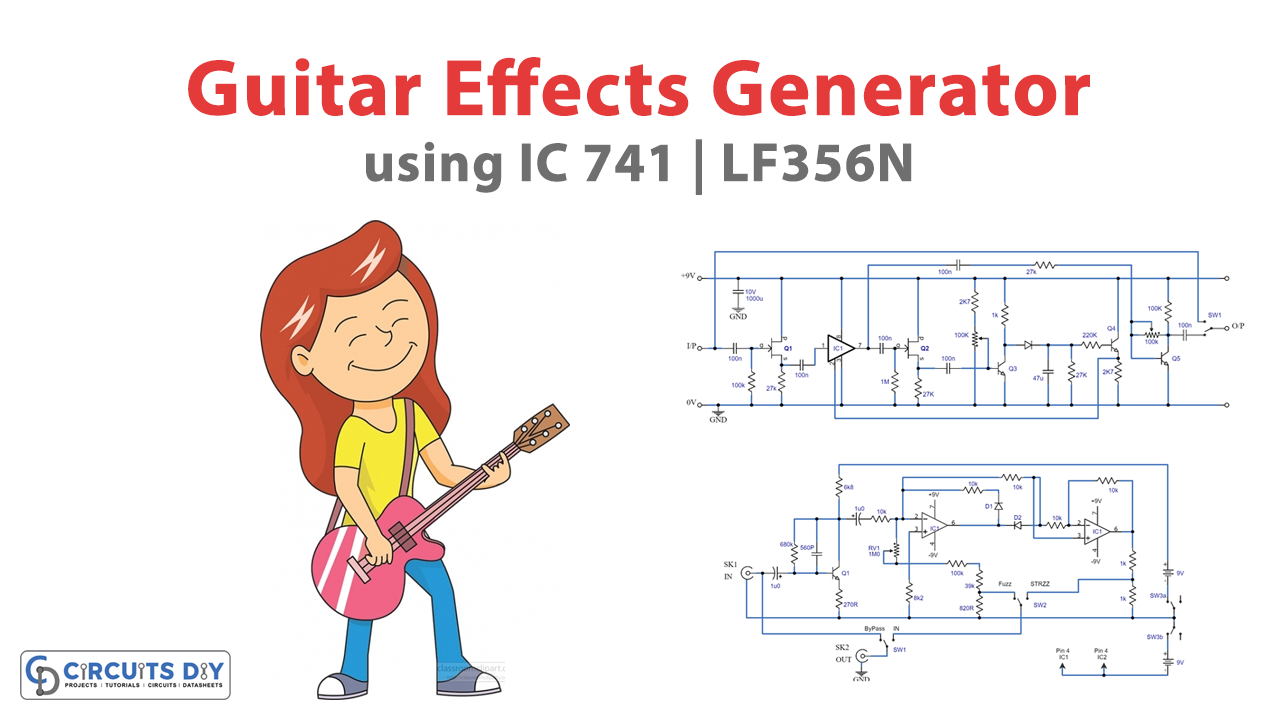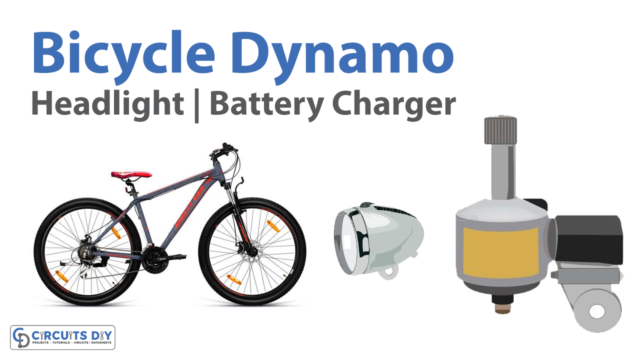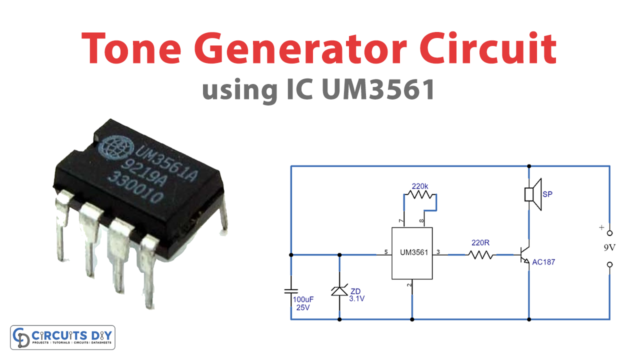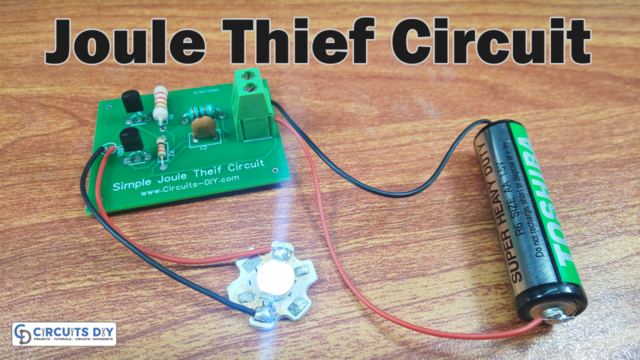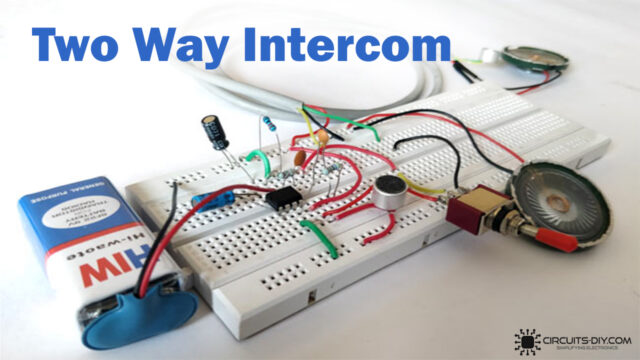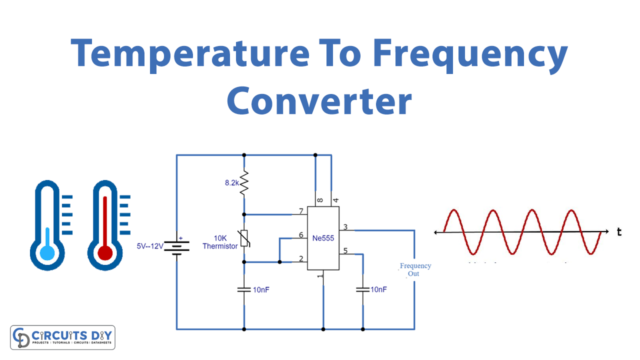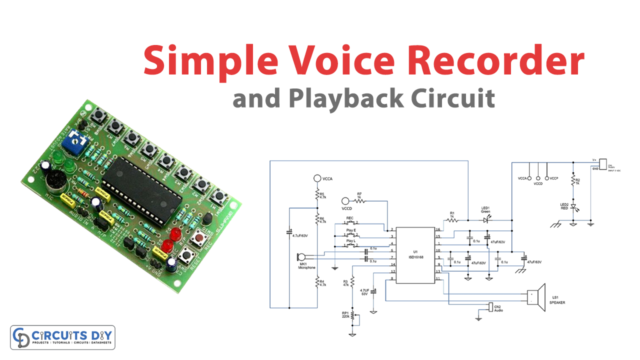Introduction
As you plug in your guitar and start strumming, you realize that your sound could use something extra. You may need a unique effect to help you stand out from the crowd, or you’re seeking a way to add sustain to your sound. Look no further than the guitar effects generator and guitar sustain circuit. These devices offer a variety of features that you can easily customize to suit your needs. With the ability to produce two distinct effects and maintain output at a fixed level, these circuits are a must-have for any guitarist looking to take their sound to the next level.
So, let’s dive in and explore the world of guitar effects and sustain circuits.
Hardware Required
You will require the following hardware for the Guitar Effects Generator Circuit.
| Components | Value | QTY |
| IC | UA741, LF356N | 1, 1 |
| Polar Capacitor | 1u0 | 2 |
| Non polar capacitor | 560p | 1 |
| Diode | 1N4148 | 2 |
| battery | 9v | 2 |
| Resistor | 680k, 6k8, 27R, 10k, 8k2 ,1k, 820R, 39k | 1, 1, 1, 5, 1, 2, 1, 1 |
| Variable Resistor | 1mo DEPTH | 1 |
| Transistor | MP56515 | 1 |
| Switch | – | 3 |
Guitar Effect Generator – Fuzz and Struzz
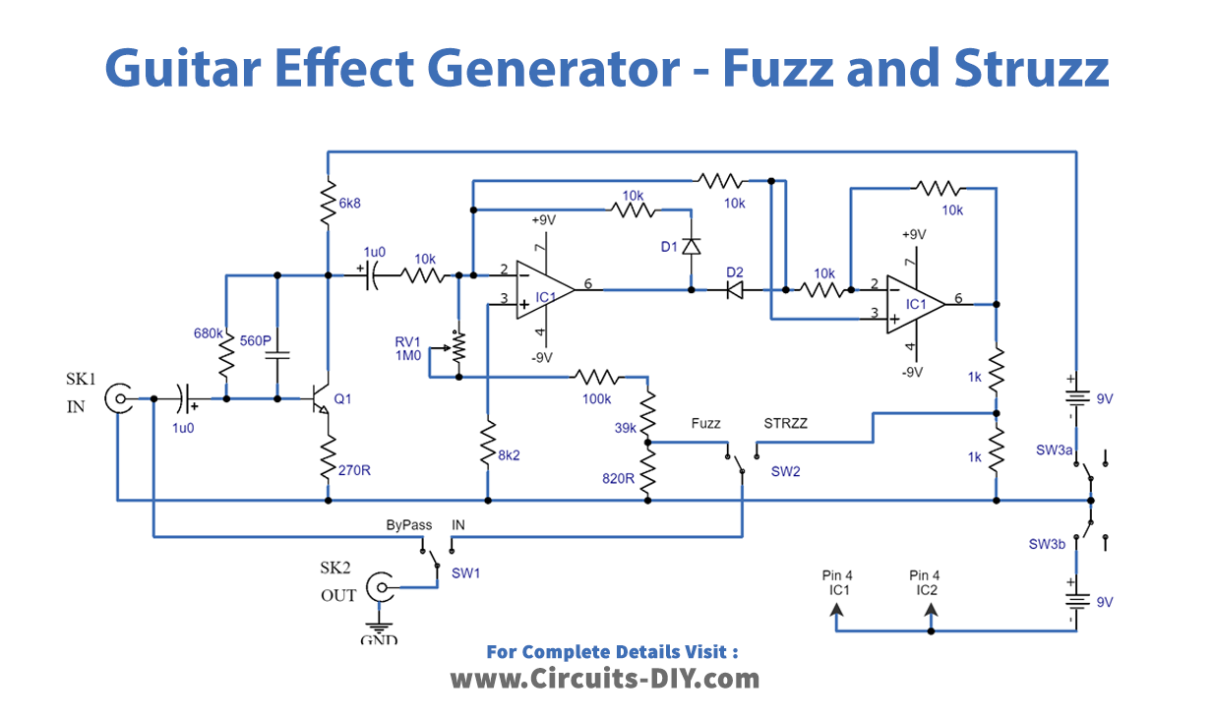
Two Effects in One
With this device, you can use either the standard fuzz effect or the innovative struzz effect. The outcome of the effect can be customized by anyone through a depth control that adjusts the sustain rate. If the sound becomes too loud due to external noise, the crunchy effect can be quickly minimized using a bypass switch.
Unique Sound of Struzz
Struzz is a distortion of fuzz that creates a unique sound, similar to an antique piano. While playing guitar, toggling between fuzz and struzz generates an exciting sound that you might want to explore further. A footswitch can be used for this purpose.
Easy Building Process Building, the circuit for this guitar effect generator should not present any issues. It is essential to ensure that the electrolytic capacitors are inserted correctly. The ICs should not be plugged in until the circuit has been thoroughly tested. With these steps in mind, you are ready to enjoy the fuzz and struzz effects on your guitar.
| Components | Value | QTY |
| IC | MC3340 | 1 |
| Polar Capacitor | 1000u, 47u | 1, 1 |
| Non polar capacitor | 100n | 5 |
| Diode | D1 = 1N34 | |
| Transistor | Q1, Q2 = 2N3819 Q3, Q4, Q5 = MPS6515 | 2 3 |
| Resistor | 100k, 27k, 1M, 2k7, 1k, 220k, | 2, 4, 1, 2, 1, 1 |
| Variable Resistor | 100k | 2 |
| Switch | – | 1 |
Guitar Sustain Circuit – Output at a Fixed Level

A Fixed Output Level The guitar sustain circuit described in this article maintains the output at a fixed level over a wide range of input levels. It is designed for use with electric guitars and works best when the guitar pickup volume is full.
Automatic Gain Control
The circuit output is monitored with a DC voltage follower, which controls the gain from the VCA that the signal passes through. This method follows the AGC guideline and provides several benefits. Unlike many other similar devices, it does not use opto coupling, which can drain the battery quickly.
No Audible Distortion
This guitar sustain circuit produces no audible distortion. The required parts are easily acquired, and the cost is minimal. The design technique is not essential. With these features, the circuit is a great choice for any guitarist looking to add sustain to their sound.
Final Words
In conclusion, the guitar effects generator and guitar sustain circuit are excellent devices that any guitarist can use to enhance their sound. The guitar effects generator provides two unique effects, fuzz, and struzz, that can be customized using a depth control and bypass switch. The guitar sustain circuit, on the other hand, maintains the output at a fixed level over a broad range of input levels and produces no audible distortion.
Both devices are easy to build and require minimal cost, making them accessible to any guitarist experimenting with their sound. With these tools at your disposal, you can take your music to the next level and explore new musical possibilities.


